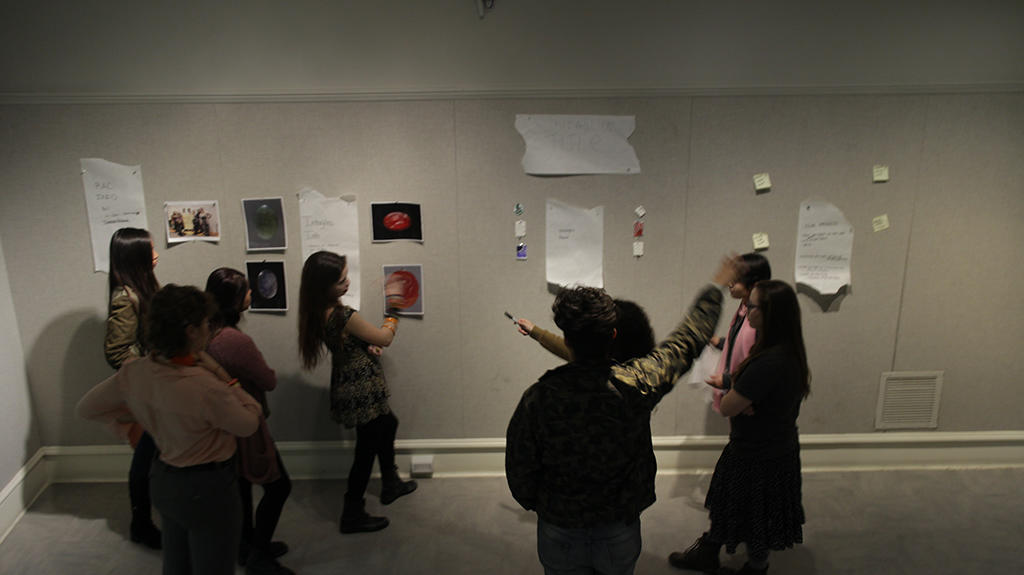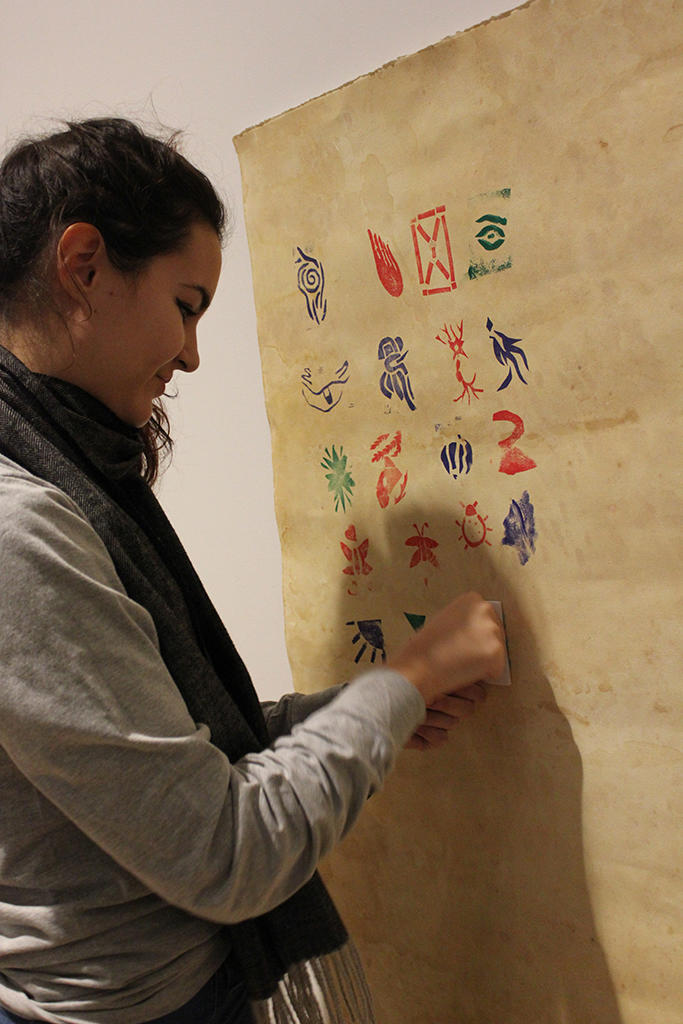As part of the RISD Art Circle (RAC), we create opportunities for visitors to learn about objects more deeply and to experience hands-on making. Our first project was to do an activity on Gallery Night. It was challenging because we had to figure out how to work together as a group, but the learning process was important and eventually brought us closer together.
After initial brainstorming we narrowed down our focus to two main areas of the museum: the Ancient Greek and Roman Galleries and the Modern and Contemporary Galleries. We were split into two groups, with one group coming up with three project ideas related to Roman objects and their history, while the other generated three project ideas related to more recent works and exploring feelings through artwork. When our whole group came back together, we spent a lot of time discussing our various ideas, pulling them apart and putting them back together again.
One of the ideas from the Roman group involved having visitors create their own version of intaglios, small fascinating gems. The whole group then contributed their thoughts and ideas to improving this project idea, with help and guidance from Gina Borromeo, the curator of ancient art, who impressed on us the importance of keeping the objects small and personal, no matter what we ended up making. We ultimately offered our project to RISD Museum visitors on two occasions. Participants created a symbol that represented themselves made it into a foam stamp.These were stamped onto a large piece of paper allowing visitors to see others’ symbols. The stamps were then pressed into Model Magic to simulate a stone that participants could take home.
During our brainstorming discussions, thoughts began to arise that mirror present-day issues. Identity was a big idea because in ancient Rome, the elite chose their symbols very carefully out of a set of images with prescribed meaning. Today, people are still always choosing images and words with which to present themselves to the rest of the world, through both social media and our everyday appearances. One question raised was the authenticity of these presentations, whether or not they actually represent who we truly are. Social class was another important idea, because intaglios were used almost exclusively by the wealthy elite, who were the only ones who were able to choose their identity and leave their mark on history.
Through this project, not only did we learn a lot of fascinating information about intaglios and ancient Roman society, but we also learned about ourselves and how we can relate to objects from other time periods. We also grew as a group, learning to accept everyone’s input and making sure nobody’s voices got left out or went unheard. Much like our large stamped paper with visitors personal intaglios, we can all see a bit ourselves in the process and final project. In this way, we were able to create an enjoyable experience for visitors through a project that was both personal and collaborative, embodied by visitors’ personal intaglio stamps and our large stamped paper.
We wanted to find ways to make our conversation and project not only visible to the public online, but onsite. We worked with the Museum’s design team to choose a font and color to represent RAC’s identity in the Museum. We mocked up the installation of the different steps of the project, including information and photos that would be most relevant to display. Posters will be on view outside the Museum’s Lisle Room for the most of the summer.



